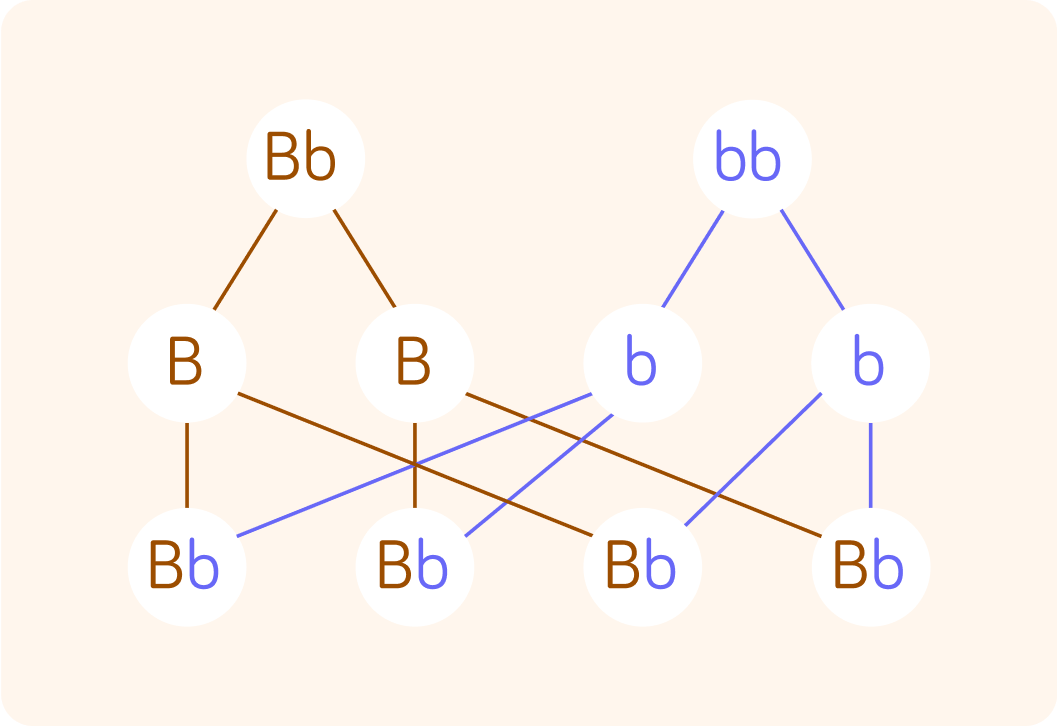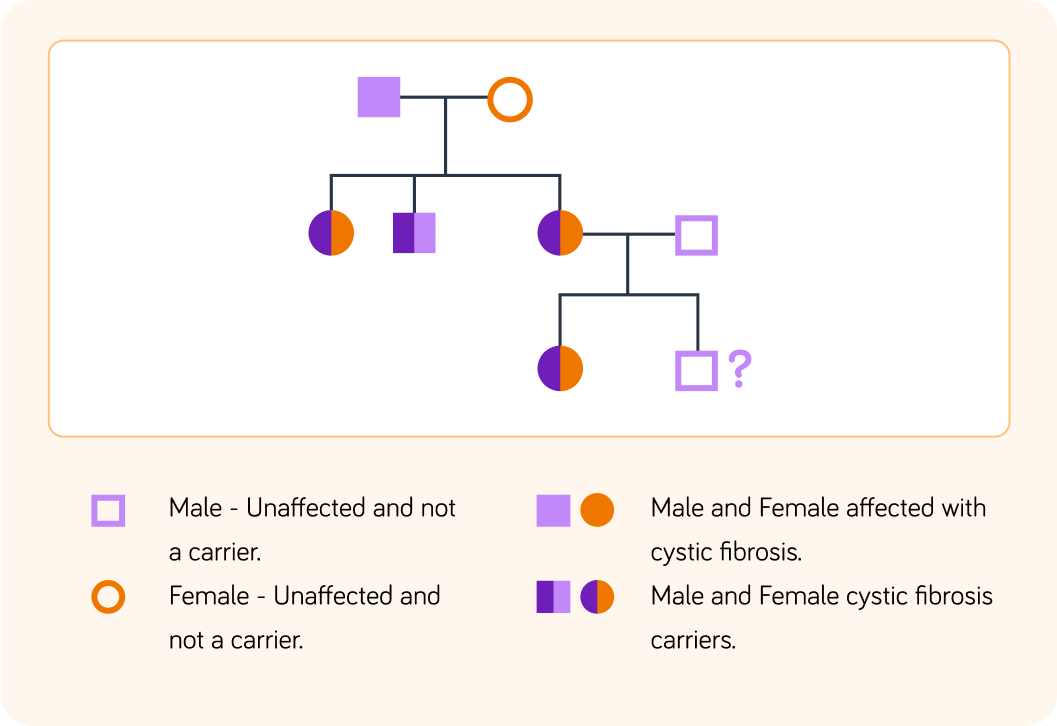YOU ARE LEARNING:
Monohybrid Inheritance

Monohybrid Inheritance
Genetic crosses can be understood using genetic diagrams, Punnett squares and family pedigrees. The outcome of these crosses can be expressed through probabilities, ratios and percentages.
Monohybrid inheritance is when offspring inherit characteristics that are controlled by a single gene. It can be hard to see in organisms exactly what is going on, because recessive alleles can be masked by the dominant. Luckily, we have a few handy diagrams that can help us: Genetic diagrams, Punnett squares and family pedigrees.
The outcome of genetic diagrams can be given in three ways:
Direct proportions, for example "1 out of 4" Probability in percent, for example 25% _________, for example 3:1

How many alleles are involved in a trait that is controlled by a single gene?

These are Punnett squares. The Punnett square to the left shows the genotypes of a homozygous brown-eyed parent and a homozygous blue-eyed parent and their potential offspring genotype. What colour eyes will all their children have?


What is it called when there are two different alleles in a gene like Bb?


Look at the Punnet square to the right. This is a brown-eyed heterozygote crossing with another brown-eyed heterozygote. What is the probability that they will have a brown eyed child? Give your answer in percent.


The information in the Punnett square to the right can also be given as a ratio. The genotypes are BB:Bb:bb. What is the correct ratio?


Look at this genetic diagram
It displays the same information about eye colour as the Punnett squares, but in a different format.

So again, it's a 100% probability a child will have brown eyes from the first cross. The top two circles are the parental genotypes (BB for one parent, bb for the other). What do you think the second line of circles are?
A) Eggs B) Gametes C) Chromosomes


You may have a preference for either Punnett squares or genetic diagrams, but it's important to know how to understand both.
Another way of displaying inheritance is by family pedigrees. You don't need to worry about drawing these yourself, but you'll need to be able to interpret them.
This is a family pedigree, sometimes called a family tree.
Family pedigrees are often used to find out who are carriers of certain genetic diseases.

Here we can see a pedigree for cystic fibrosis. We can see there is one affected parent, the dad, and one unaffected parent, the mother. They produce three offspring. How would we describe these offspring?
A) Affected B) Unaffected C) Carriers


So all three children have one allele for cystic fibrosis, but none of them actually suffer from the disease. What does that tell us about cystic fibrosis?
A) It's caused by a dominant allele. B) It's caused by a recessive allele. C) It's not inherited.


Try to work out what the genotype and phenotype could be for the offspring labelled '?'. Use Punnett squares and genetic diagrams for each generation if this helps. Remember, it's the recessive homozygote which causes the disease.
A) A boy, 25% likely he's affected, 75% likely he's unaffected. B) A girl, 75% likely she's a carrier, 25% likely she's unaffected. C) A boy, 50% likely he's a carrier, 50% likely he's unaffected.
Answer A, B or C.


Sometimes, you might be asked to give a ratio in its simplest form. This means to find the highest number that all parts of the ratio can be divided by, and divide them by it.
For example 4:4 would be 1:1, as both parts can be divided by 4, and 6:3:3 would be 2:1:1 as all three parts can be divided by 3.
If there was a cross between a homozygote recessive short plant, tt, and a heterozygote tall plant, Tt, what would the phenotype ratio be in its simplest form?

This is the same image of a brown-eyed heterozygote crossing with another brown-eyed heterozygote. Their offspring was BB, Bb, Bb, bb.
We said the phenotype was 75% or a ratio of 3:1 for a brown eyed child.

You could also give the probability of brown eyes as a direct proportion. What do you think this is?
A) 1 out of 4 B) 3 out of 4 C) 3 out of 7
Answer A, B or C.


If the phenotype is 75% or a ratio of 3:1 for a brown-eyed child, what is the probability for a blue-eyed child as a direct proportion?

